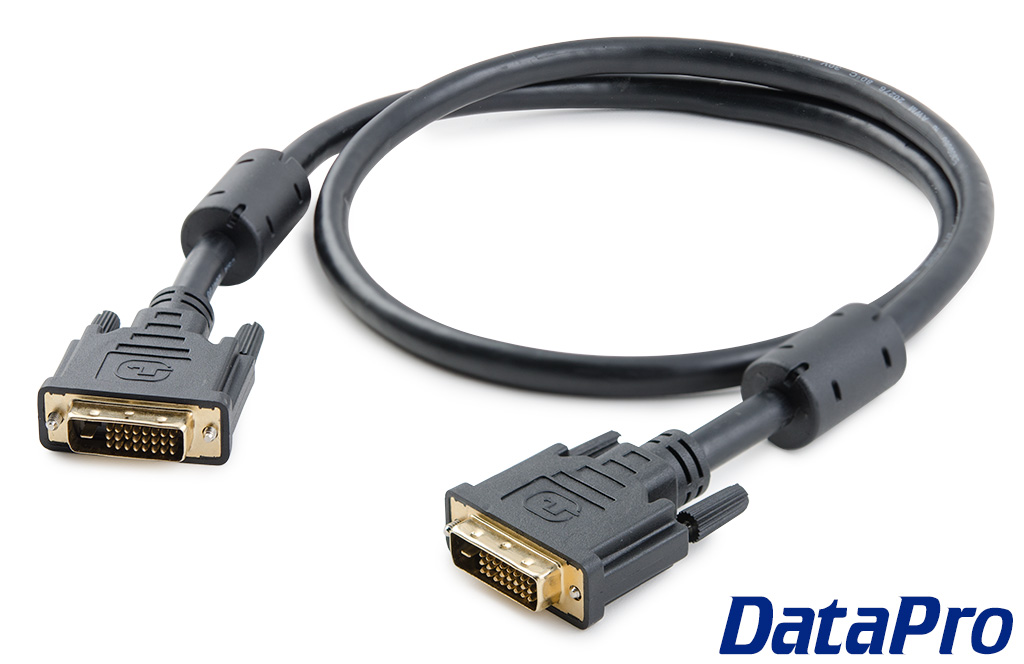A Complete Guide to International Video Formats
 Video Standards
Broadcast Standards
Video Conversion Products
Video Standards
Broadcast Standards
Video Conversion ProductsVideo Cables
VIDEO STANDARDS
Composite Video:Composite video is the standard that can connect almost all consumer video equipment - television sets, DVD players, VCRs and camcorders.S-Video:
Normally it is transmitted over basic composite video cables with male RCA plugs on each end. Sometimes you will see these as dual RCA cables, which are used for stereo audio cables, and also a triple RCA cables for combined composite video and stereo audio cables.
Composite video combines the three basic elements of a video picture (color, brightness, and synchronization data) into a single combined ("composite") signal.S-Video, also called Y/C, uses two separate video signals. The luminance (Y) is the black & white portion, providing brightness information. The chrominance, or chroma (C) is the color portion, providing hue and saturation information.TV/CATV:
In essence, an S-video signal is a composite signal that has been divided into two. This video signal, transmitted with color and brightness on two separate channels, makes for a sharper picture image, with less granularity, on the receiving device.
S-Video is carried on cables terminated with 4-pin Mini-DIN connectors. Other types of cables (such as the Apple ADB cable) also use this same connector, although the type of wire used is different.
Since digitized granularity looks worse than analog granularity, S-Video is preferred over composite video whenever this is an option.Coaxial TV Cable signals are carried as a single, composite-type 75-Ohm analog signal. Usually, RG59 or RG6 coaxial wire is used, and terminated with a screw-locking F-type connector. RG59 wire is usually suitable for runs up to 750 feet without boosting, and the more robust RG-6 wire is suitable for up to 1500 feet without boosting. The maximum signal strength allowed by the FCC is 15.5dBmV, so attenuators can be added when the signal is too high, and tilt compensators for long-distance runs.RGB:Although Component Video is sometimes referred to as RGB video, RGB is not actually a video standard, but rather a standard for computer monitors. It requires a four conductor cable for connecting a monitor to a CPU. In concept, it is similar to S-Video. Three of the conductors carry color information for the red, green and blue components of the image, while the fourth, called the "sync" or synchronization line, carries timing information to be used concurrently with the color information.Component Video:
Because RBG separates the video signals based on color information and not luminance/chroma, it is possible to create an RGB to VGA cable without electronic conversions.
In this sense, RGB is not the same as component video, although component uses cables with red, green, and blue heads. Both component and RGB use separated signals for improved quality, but the signals themselves are fundamentally different.Component video is the final generation of analog video, taking the advancement from composite (1-signal) to S-Video (2-signals) one step further. It has separated luma (brightness) and chroma (color), but the chroma is also separated into two signals, red and blue. The result is a triple-headed RCA cable and an image cleaner than composite with less color bleeding that S-Video. Although common on most DVD players and HDTV's, component video is very rare on older TV sets and VCR's.
It is important to remember that with component video, the triple- headed cables are often colored red, green, and blue, but they do not carry color signals. Generally, these cables are known as YUV, Y for luma and UV for the two chromas. On monitors and DVD players, the connectors are usually labeled Y/Cb/Cr, for Luma (Y), Chroma Blue (Cb), and Chroma Red (Cr).
Component also can be used for high-definition output to HDTV compatible displays. When component video is used as hi-def, it is labeled Y/Pb/Pr, to distinguish it from standard component (Y/Cb/Cr). In this case, rather than using a YUV signal, the video is transferred on a Progressive Scan signal, for high resolutions on every frame.
Because component and VGA signals are fundamentally different, it is not possible to simply adapt from one to the other. Instead, electronic VGA to Component converters and HDTV component to VGA converters are necessary.
Broadcast Standards
Another group of standards combine technical and legal definitions. These are called ATSC, NTSC, PAL, and SECAM.ATSC stands for Advanced Television Systems Committee, but the acronym is synonymous with the group's standard for digital television broadcast. ATSC is used for over-the-air transmission of HDTV signals, replacing the former analog standard NTSC. It can support video resolutions up to 1080p and 5.1 surround audio, and can be picked up on the same frequency UHF/VHF antennas as NTSC.NTSCNTSC stands for National Television Standards Committee, and is synonymous with the video transmission standard for North and Central America, including Mexico and Canada, and Japan. Its technical format is 525 lines per frame at roughly 30 frames per second refresh rate. The video is interlaced over the even and odd scanlines, for an apparent refresh rate of ~60fps.PALIn quality, NTSC is equivalent to a composite signal. but is not necessarily equivalent to the output from a video capture card that may claim to be NTSC-legal.
NTSC is no longer utilized in the United States, having been replaced with the digital ATSC standard in 2009.
PAL (Phase Alteration Line) is the European counterpart to the NTSC standard. It has a higher vertical resolution (625 lines per frame) but a lower refresh rate (25 frames per second) that can cause flickering. It is the standard for the UK, Western Europe, the Middle East, and parts of Africa and South America.SECAMSECAM (Systeme Electronic Pour Couleur Avec Memoire) is very similar to PAL. It specifies the same number of scan lines and frames per second, but differs in that chrominance (color) is FM modulated. It is the broadcast standard for France, Russia, and parts of Africa and Eastern Europe.
Unauthorized duplication strictly prohibited.






